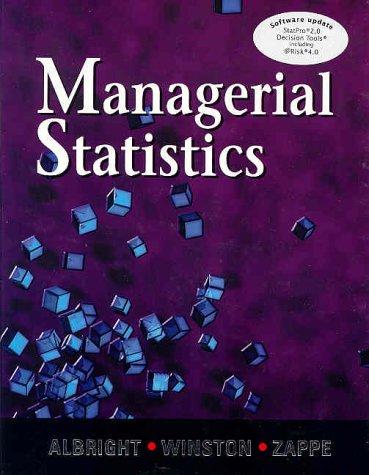In a study published in 1985 in Business Horizons, Platt and McCarthy employed multiple regression analysis to
Question:
In a study published in 1985 in Business Horizons, Platt and McCarthy employed multiple regression analysis to explain variations in compensations among the CEOs of large companies. Their primary objective was to discover whether levels of compensations are affected more by short-run considerations—“T’ll earn more now if my company does well in the short run’”—or long-run considerations—“My best method for obtaining high compensation is to stay with my company for a long time.” The study used as its response variable the total compensation for each of the 100 highest paid CEOs in 1981. This variable was defined as the sum of salary, bonuses, and other benefits (measured in $1000’s).
The following potential explanatory variables were considered. To capture short-run effects, the average of the company’s previous 5 years’ percentage changes in earnings per share (EPS) and the projected percentage change in next year’s EPS were used. To capture the long-run effect, age and years as CEO, two admittedly correlated variables, were used. Dummy variables for the CEO’s background (finance, marketing, and so on) were also considered. Finally, the researchers considered several nonlinear and interaction terms based on these variables. The best-fitting equation was the following: 
The corresponding R2 was 19.4%.
a. Explain what this equation implies about CEO compensations.
b. The researchers drew the following conclusions. First, it appears that CEOs should indeed concentrate on long-run considerations—namely, those that keep them on their jobs the longest. Second, the absence of the short-run company-related variables from the equations helps to confirm the conjecture that CEOs who concentrate on earning the quick buck for their companies may not be acting in their best self-interest. Finally, the positive coefficient of the dummy variable may imply that financial people possess skills that are vitally important, and firms therefore outbid one another for the best financial talent. Based on the data given, do you agree with these conclusions?
¢. Consider a CEO (other than those in the study) who has been in his position for 10 years and has a financial background. Predict his total yearly compensation (in $1000’s) if he is 50 years old; if he is 55 years old. Explain why the difference between these two predictions is not 5(88.27), where 88.27 is the coefficient of the Age variable.
Step by Step Answer:

Managerial Statistics
ISBN: 9780534389314
1st Edition
Authors: S. Christian Albright, Wayne L. Winston, Christopher Zappe





